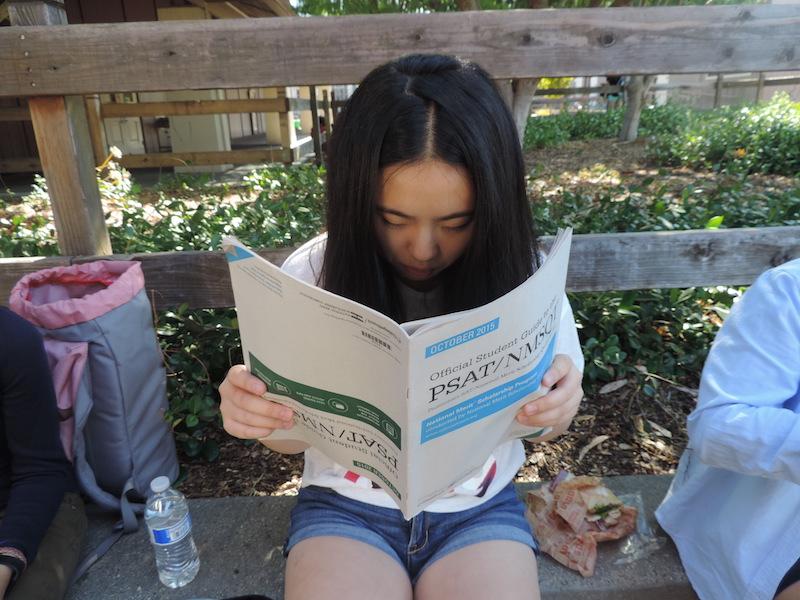
With the changes to this year’s PSAT, also referred to as the National Merit Scholarship Qualifying Test, the junior class has had less time and resources to prepare, which some students see as a disadvantage.
“Being the first class to take it does give us a disadvantage because of a lack of practice materials,” junior Kenneth Cheung said. “For example, my review book for the new PSAT only had two practice tests while they normally have several more.”
However, PSAT scores are evaluated in comparison to all test takers, each of whom is similarly familiar to the new exam.
Although the PSAT scores don’t directly affect college admissions, performing well on the test may qualify students for scholarships and national recognition. Plus, it provides students with an idea of how they will do on the real test, along with their necessary areas of improvement.
Read on for seven helpful tips to keep in mind for the PSAT.
- Study the booklet. Use the booklet, handed out during advisory, to get a sense of what the PSAT will be like. It contains practice problems and a thorough description of what each section entails. Reading the instructions will save you time on the test and will allow you to directly start answering the questions. Familiarize yourself with the types of questions so you won’t be surprised on the actual day.
- Eat healthily. Having a nourished body will allow you to focus on questions without thinking of your hunger. Remember, the new PSAT lasts 2 hours and 45 minutes, slightly longer than the old version. Because students are not allowed to bring food into the testing center, eating a good breakfast beforehand will prevent you from feeling hungry before it is over.
- Pack the night before. Juniors are advised to wake up slightly earlier on Wednesday to report to their special testing room (posted in the Student Center and Guidance Office windows). Bring multiple #2 pencils, a student ID and an approved calculator. Pack the night before to avoid rushing in the morning and being tardy, which may ban you from taking the test.
- Get lots of sleep. Sleeping well before the PSAT will ensure that you are well-rested. Don’t make careless mistakes by skipping or misreading questions!
- Relax. Some students may find it useful to take a moment to meditate and regulate their breathing before the exam. Take a minute or two to forget your surroundings and envision yourself taking practice PSAT tests. Dedicating this small portion of time to relaxation can have a large payoff by improving your ability to focus.
- Pace yourself. Learn the number of questions per section and the time allotted. According to the College Board, the Evidence-based Reading section has 60 minutes to complete 47 questions while the Writing and Language section gives you 35 minutes for 44 questions. The Math calculator section has 31 questions long and is 45 minutes long, while the no calculator section has 25 minutes for 17 questions. With this in mind, you’ll be less likely to fall behind or rush and make careless mistakes.
- Guess! Unlike the old PSAT, the new test has no guessing penalty. Take advantage of this feature to gain some peace of mind if you encounter a question you don’t know the answer to by guessing instead.
With these tricks up your sleeve, hopefully you will be able to perform better on the PSAT. Good luck tomorrow!

